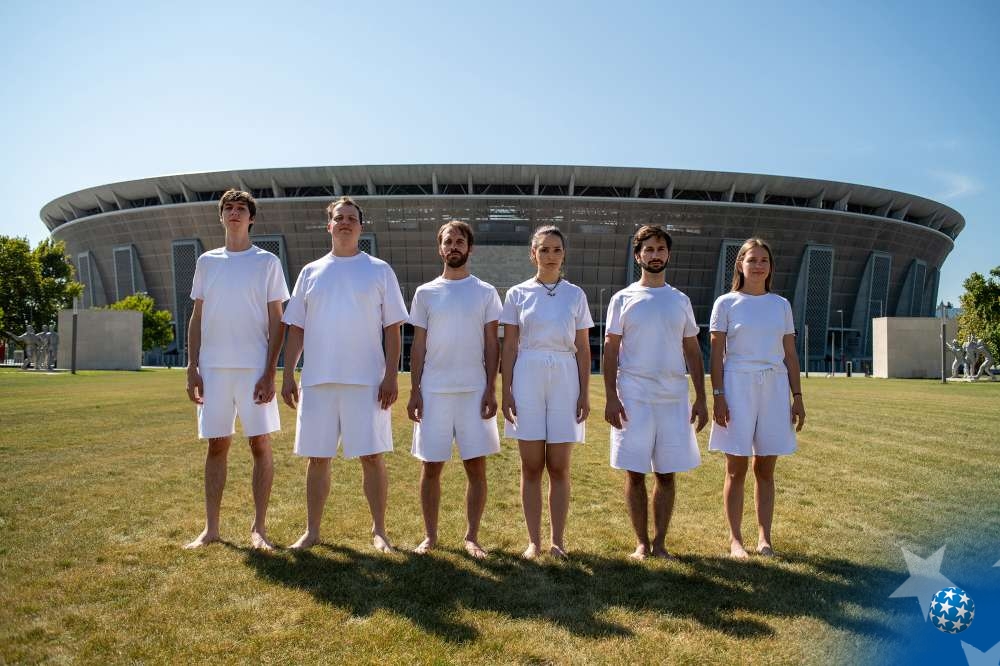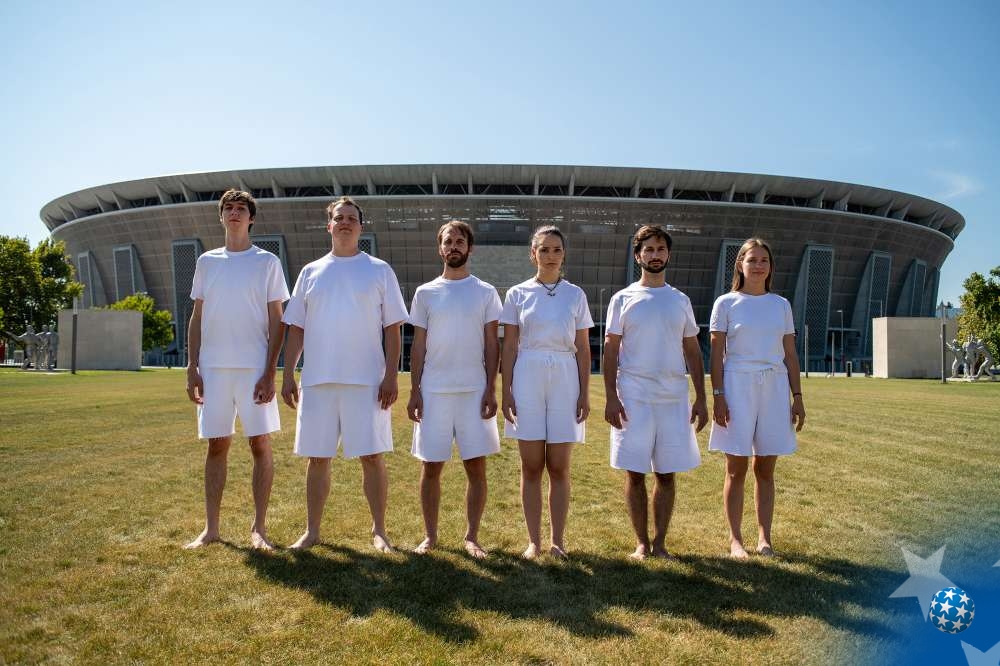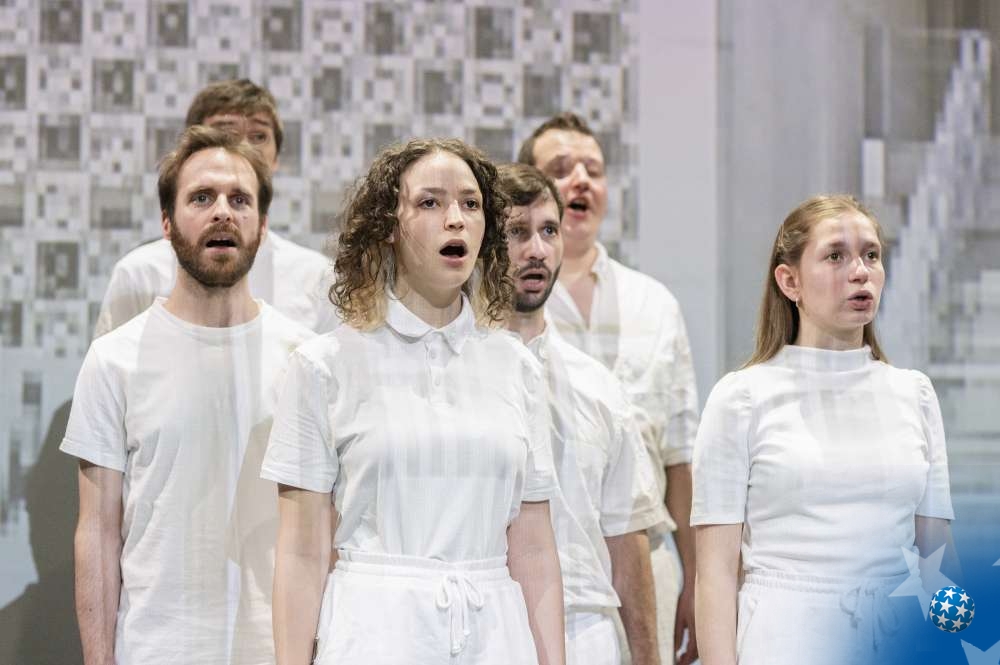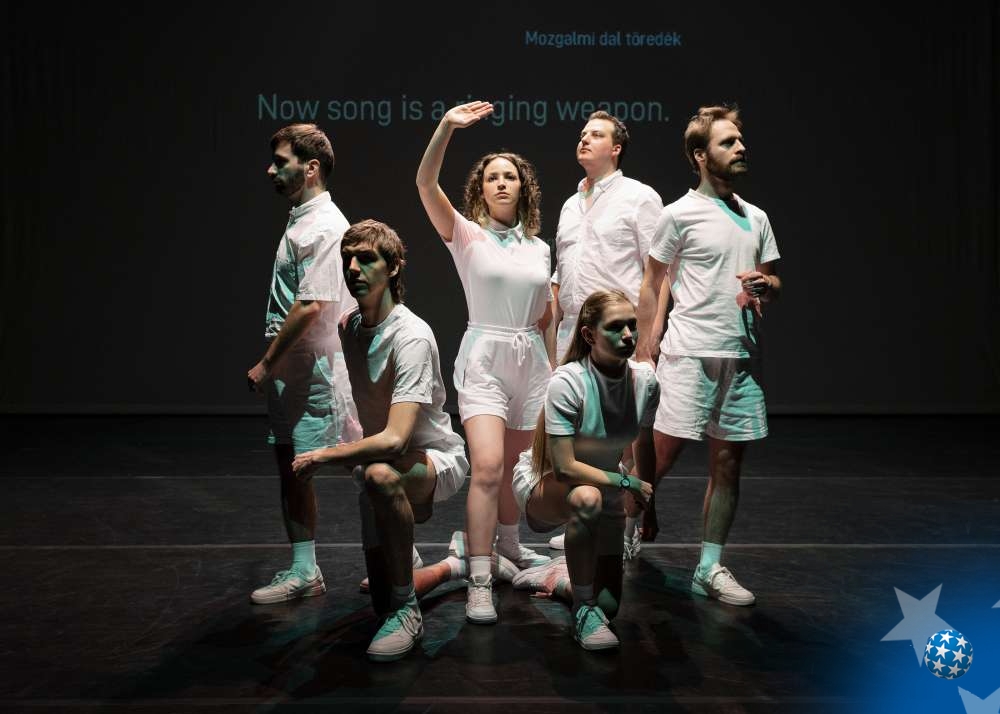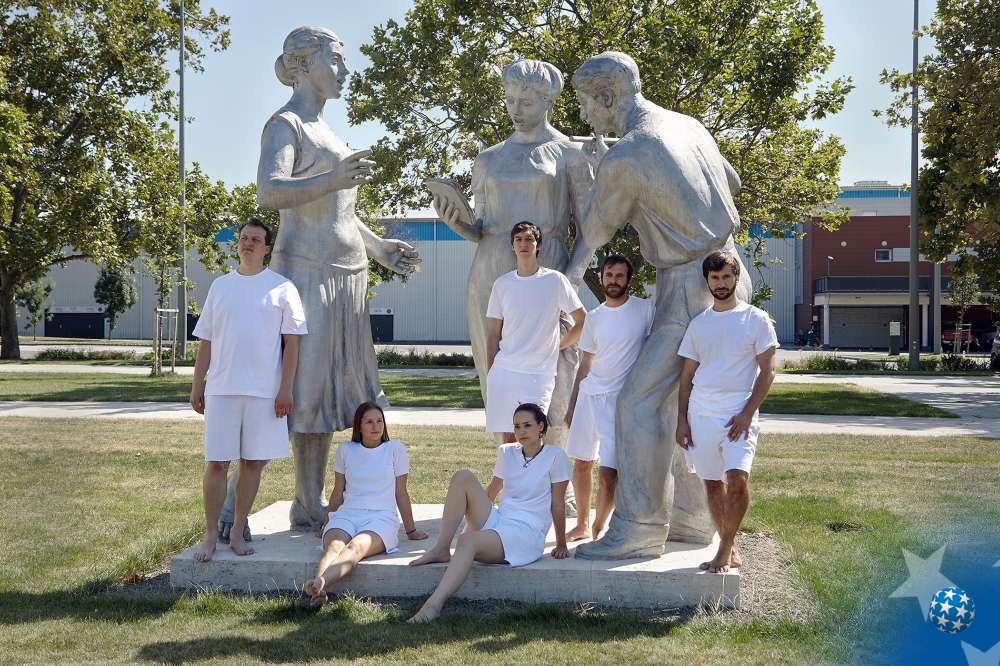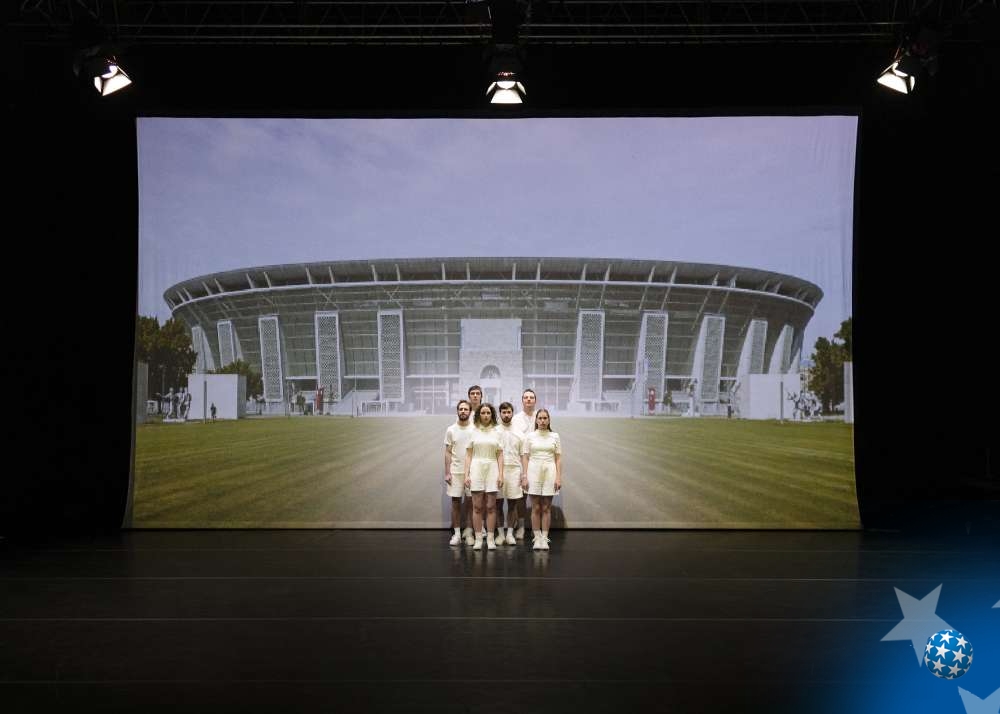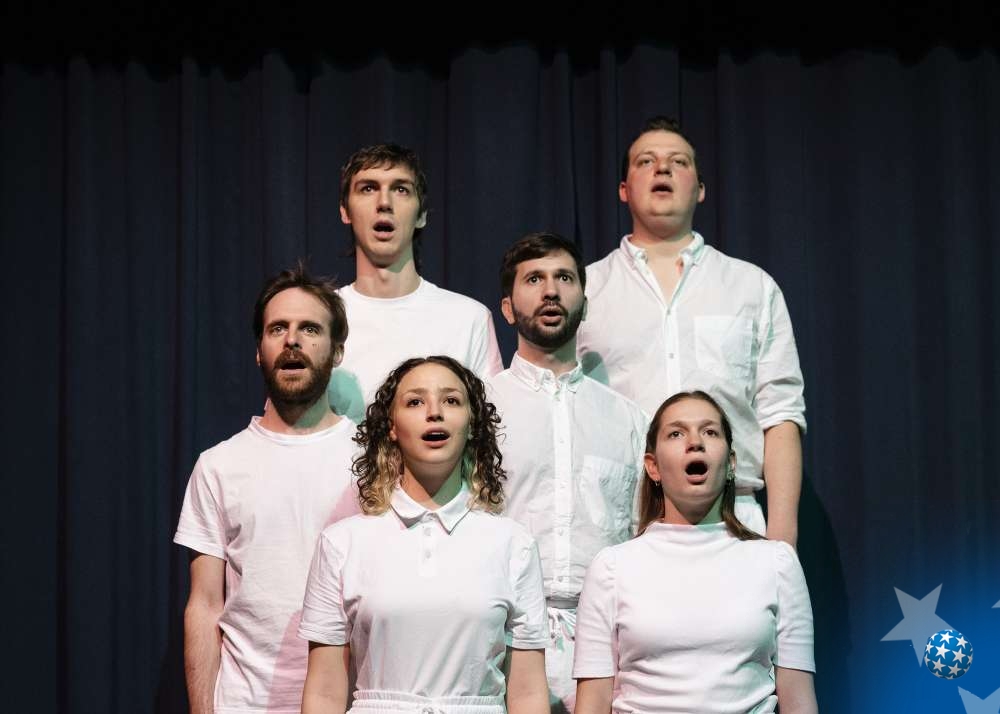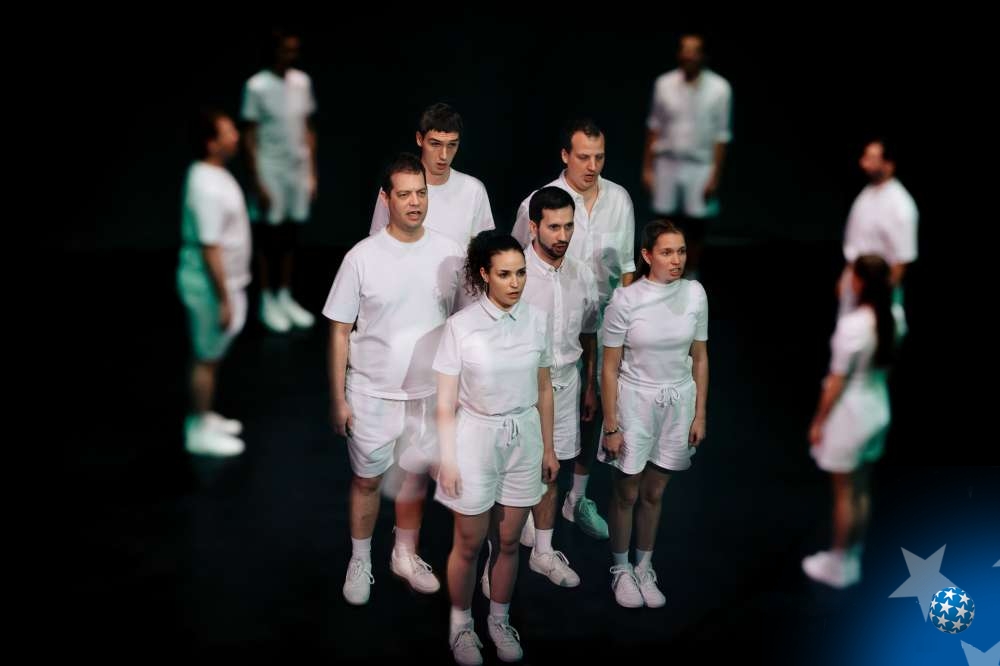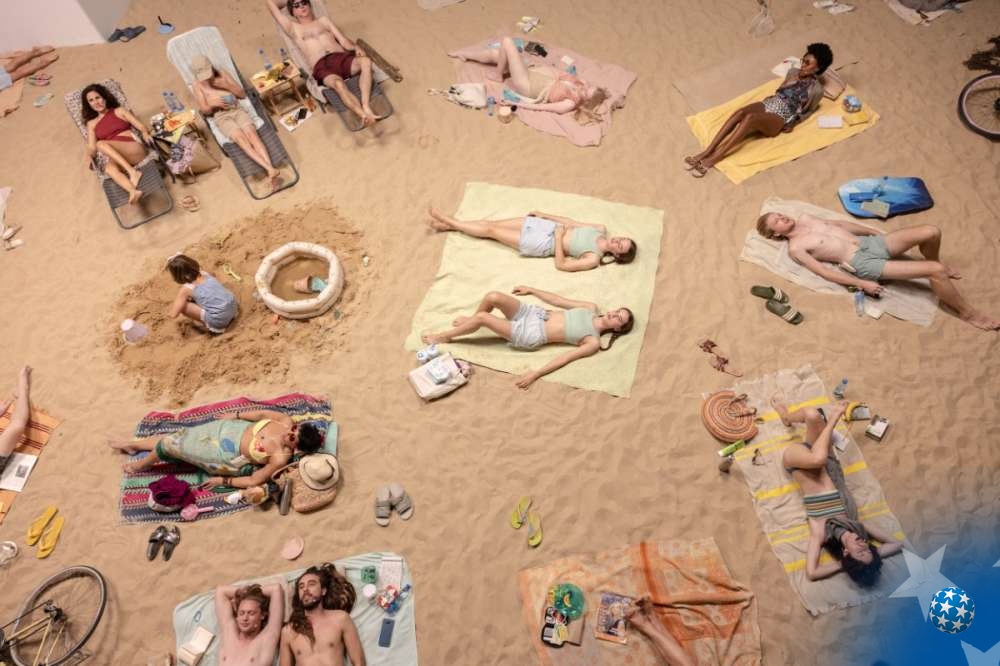Curators’ Statement
The performance Singing Youth from Hungary, by Judit Böröcz, Bence György Pálinkás, Máté Szigeti, also through singing, through an operetta whose libretto is composed of the statements politicians have made in the public space and in the media, examines the problem of building the national stadium Puskás Aréna in Hungary, which replaced the former People’s Stadium located in that same place, that was not dedicated to the nation but to the people. At the former entrance to the stadium, there was a sculpture by a Greek sculptor Makrisz Agamemnon, of the same name - “Singing Youth”, which survived the period when many works of art, created during the socialist era, were removed from the public space, while the stadium dedicated to the people was not. In its place, using crushed concrete from which it was made, at the request of the Hungarian president, Viktor Orbán, in 2019, a new stadium was built, this time dedicated to the nation. Both Singing Youth, the statue and the performance, bear witness to the last seventy years of turbulent Hungarian history and of how art and music were at the same time a key factor both in promoting the ideology of the ruling structures and in the rebellion of the youth.
About the Performance
“Every singing group is a tank, playing its part in the seizure of the reactionary cultural policy castle.” Endre Székely, "Out into the sunlight". Singing Worker (Éneklő Munkás), 1947
What did young people sing in the 1950s and what do they sing today? What messages are conveyed through songs from positions of power? What ideas are embodied by the works of art commissioned and put on display in public space? What do favourite bands of the regime sing about?
“Singing Youth”, double life-size aluminium figures of two girls and a boy with a flute, bear witness to the last 70 years of Hungarian history full of turbulent times, during which music and culture in general remained important in young people’s lives and was a key tool for those in power to promote their ideologies. The three figures are doubled on stage: our world as represented in these songs, comes to life through the performance of six young singer-performers with Máté Szigeti’s original music.
The Authors
This production is the result of the collaborative work of the team. As a team of creators, performers, they divided tasks based on competency and availability, leaving room for opportunities to learn from each other. They observed the specific situation of team members at given times and divided the workload accordingly. They aspired to follow feminist dramaturgical principles like transparency, avoiding self-exploitation and exploitation of each other as well as practicing various forms of care.
Team: Benjamin Bozi, Judit Böröcz, Péter Fehérváry, György Juhász, Maxim Jurin, Katalin Mezei, Bence György Pálinkás, Eszter Sokhegyi, Balázs Szabon, Máté Szigeti, Máté Szilvay, Zsófia Tamara Vadas.
From the Reviews
The concept of Judit Böröcz and Beence György Pálinkás seems to rely on a macabre parody in the mixture of alarming lyrics and neutral, timeless sound. Watch out, the story is happening in loops, and it's that time again!
Michael Bartsch, nachtkritik.de
Documentary approach, receptiveness to research and juxtaposition of the past with the present, not without irony and humour.
Panni Puskás, revizoronline.com
For me it is still a very important experiment: to analyse and present this propaganda, this rhetoric of war (Berzsenyi's poem vs. Orbán's speech, for example), to make people aware of its harmfulness. It is very difficult to "talk" about the use of language with such a minimalist theatrical toolkit, maintaining the intensity of attention throughout.
László Százados (with Gabriella Schuller and Márton Hajnal, discussion transcript), szinhaz.net
